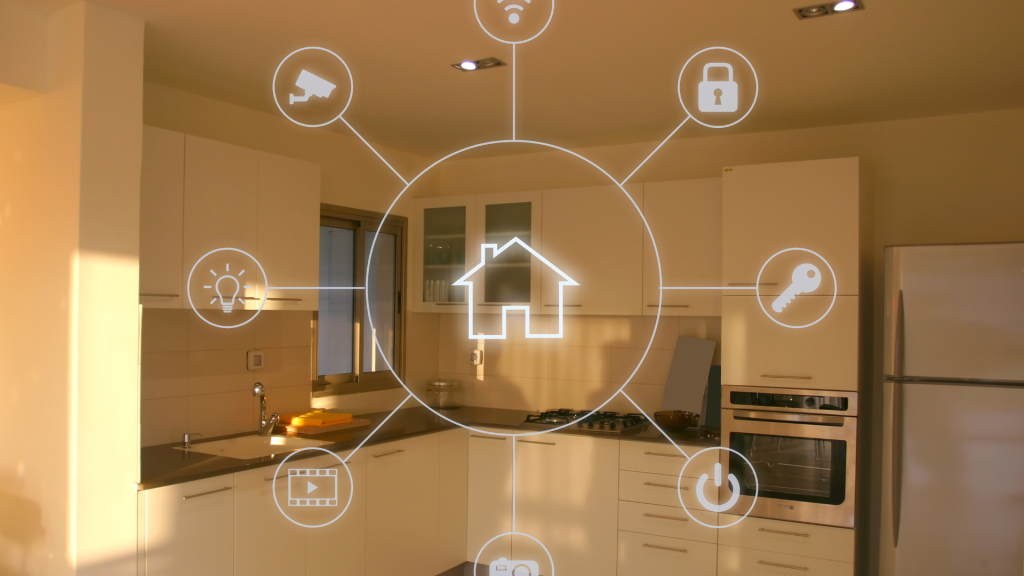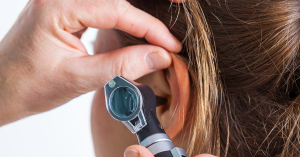Modern hearing aids have come a long way from the bulky, analog devices of the past. Today’s hearing technology is sleek, smart, and incredibly advanced — offering features like Bluetooth connectivity, AI-powered sound adjustments, and integration with mobile apps. These innovations can significantly improve the quality of life for people with hearing loss, providing not only better sound but also greater control and customization.
But as these devices become more sophisticated, they also raise important questions that go beyond performance and comfort. In a world where digital privacy is already a growing concern, what happens when your hearing aid starts collecting data about your daily habits, locations, and even health status? How much do users truly understand about what their devices are doing behind the scenes?
This article explores the ethical and privacy risks associated with modern hearing devices. We’ll look at the types of data these devices collect, how that information is used, and the potential vulnerabilities users may not even know exist. We’ll also discuss what manufacturers and hearing care professionals can do to ensure users — particularly older adults — are informed, protected, and respected.
Hearing better shouldn’t come at the cost of personal privacy. As hearing aids continue to evolve, understanding their ethical implications is more important than ever.
The Rise of Smart Hearing Technology
Over the past decade, hearing aids have undergone a technological revolution. What were once simple amplification devices are now miniature computers capable of connecting to smartphones, adjusting to different sound environments automatically, and even learning from user behavior over time. This leap in capability has opened up new opportunities for users — but it has also introduced a new layer of complexity and concern.
Many of today’s hearing aids come equipped with Bluetooth technology, allowing them to stream audio directly from phones, TVs, and other devices. Users can control volume, switch programs, and monitor battery life through companion apps. Some hearing aids now incorporate artificial intelligence (AI) to analyze the user’s listening environment and adjust settings in real time. Others integrate with cloud platforms, enabling remote programming and updates by audiologists without an in-office visit.
These features provide real, tangible benefits: better sound clarity, greater personalization, and more convenience. For many users, especially older adults, these advances can mean greater independence and a higher quality of life.
However, the more connected a device is, the more data it can potentially gather and share. These hearing aids are no longer passive tools — they are active data collectors. They track where and when users wear them, how they interact with different environments, what devices they connect to, and how frequently adjustments are made.
This growing sophistication raises an important ethical question: Are users fully aware of how much data is being collected — and who has access to it? For individuals who may not be digitally literate, especially in older populations, the trade-offs between convenience and privacy may not be obvious.
As hearing devices evolve, so must our conversations around ethics, consent, and transparency. Recognizing the power and potential of these technologies is essential — but so is understanding their limitations and risks.
What Data Do Hearing Aids Collect — and Why?
Many people are surprised to learn just how much information today’s hearing aids can gather. These aren’t just sound amplifiers anymore — they’re smart devices equipped with sensors, wireless communication tools, and software that collects, stores, and sometimes transmits data. While this functionality can enhance the user experience, it also opens the door to significant privacy and ethical concerns.
Types of Data Collected
Modern hearing aids and their associated apps can collect a wide range of data, including:
- Location Data: GPS-enabled features can track where the hearing aid is used, helping the device adjust to different sound environments — like a noisy restaurant versus a quiet home.
- Listening Environment: Devices can analyze the acoustic surroundings (e.g., background noise, speech presence) and log this information to optimize future performance.
- Usage Patterns: This includes how often the hearing aid is worn, how frequently users change settings, what features are most used, and for how long.
- Device Interactions: When connected to a smartphone or other smart devices, data about these interactions — such as call durations or media streaming — can be recorded.
- Health Indicators: Some advanced models can detect falls or monitor physical activity, turning hearing aids into health-monitoring tools.
Why Manufacturers Collect This Data
Manufacturers claim that data collection serves multiple beneficial purposes:
- Personalization: Data helps fine-tune the device to better meet the individual’s needs based on their real-world usage and preferences.
- Remote Support: Audiologists can adjust settings remotely, reducing the need for in-office visits — especially helpful for people with mobility issues.
- Product Development: Aggregate, anonymized data helps manufacturers improve future device models and software updates.
- Troubleshooting: Usage logs allow service professionals to diagnose technical issues more accurately.
While these justifications are reasonable and even helpful, they depend on transparent, ethical data practices. Users must be clearly informed about what’s being collected, how it’s stored, and who can access it. Unfortunately, privacy policies are often buried in dense legal language that many users — especially older adults — may not fully understand or even read.
The bottom line: users deserve to know not just that data is being collected, but why, and how it may impact their privacy. Without this clarity, even the most beneficial technology can raise serious ethical concerns.
Ethical Concerns: Informed Consent and User Understanding
At the heart of ethical technology use is the principle of informed consent — the idea that individuals should clearly understand what data is being collected from them, why it’s being collected, how it will be used, and with whom it may be shared. Unfortunately, when it comes to modern hearing devices, this principle is often more theoretical than practical.
Many users, especially older adults, may not fully grasp the data-sharing capabilities of their hearing aids. This isn’t due to a lack of intelligence or interest — it’s often a result of poor communication from manufacturers and healthcare providers. Privacy policies tend to be written in dense, legalistic language, buried deep in user manuals or app settings. As a result, the average user may agree to terms without realizing they’ve consented to extensive data tracking.
This lack of understanding creates a serious ethical dilemma. If consent is given without true comprehension, is it really consent at all?
Here are a few key ethical concerns:
Accessibility of Information
Privacy notices should be written in plain language, with clear examples of what data is collected and why. Audiologists and hearing care professionals have a responsibility to ensure users — especially those less familiar with technology — understand the implications of their choices.
Vulnerable Populations
Older adults, individuals with cognitive decline, or those who rely on caregivers may be particularly vulnerable to data misuse or manipulation. Ethical hearing care must account for these populations and involve trusted advocates in decision-making when appropriate.
Consent Isn’t One-and-Done
Ethical consent isn’t just a checkbox clicked during setup. As device features evolve or new data capabilities are introduced, ongoing consent and education should be standard. Users should be notified when data practices change and given the chance to opt in — or out.
Implicit vs. Explicit Consent
In some cases, features like location tracking or cloud backups may be enabled by default, and users may never realize it. These “silent” settings can lead to inadvertent data collection without true user awareness. Best practices call for explicit opt-in settings, not default consent.
Ultimately, ethical hearing care is about respecting the individual’s right to make informed decisions. As hearing aids become more powerful and connected, so too must our commitment to clarity, transparency, and autonomy.
Privacy Risks and Data Security Challenges
With the increased intelligence and connectivity of modern hearing aids comes a new frontier of risk: data privacy and security threats. These devices, while incredibly beneficial, are part of the larger Internet of Things (IoT) ecosystem — and like any connected technology, they are susceptible to breaches, misuse, and unintended exposure of sensitive information.
Hacking and Unauthorized Access
Hearing aids that connect to smartphones or the internet via Bluetooth or cloud services can potentially be hacked or accessed remotely if proper security measures aren’t in place. While rare, such breaches could allow attackers to:
- Track the user’s location or daily habits
- Access conversations or streaming content
- Change device settings without consent
These risks are particularly concerning for older adults who may not have the digital literacy to recognize signs of tampering or understand how to protect themselves.
Third-Party Data Sharing
Manufacturers and app developers often work with third-party analytics companies or cloud providers. Without clear user consent, data shared with these entities may be used for purposes beyond improving device performance — including targeted advertising, behavioral profiling, or even resale to data brokers.
Even when data is anonymized, it’s possible to re-identify users through cross-referencing with other datasets — especially if geolocation, behavioral patterns, or device serial numbers are involved.
Weak Encryption and Poor Data Storage Practices
If a hearing aid’s app or data management system doesn’t use robust encryption, user data is vulnerable to interception. Similarly, cloud storage without proper access controls or audits can result in breaches, exposing personal health information and user behavior logs.
Many users assume their data is protected under health privacy laws, but in reality, not all hearing aid manufacturers are covered by medical data regulations like HIPAA (in the U.S.). This creates a regulatory gray area where some data is protected — and some isn’t.
Who Owns Your Data?
Another growing concern is data ownership. When a user’s hearing data is stored on a cloud server or analyzed by AI, who controls that information? Is it the user, the manufacturer, or a third party? The answer often lies in obscure terms of service that users rarely read — and even if they do, the language may be too technical to decipher.
Real-World Consequences
Breaches of hearing aid data could expose private conversations, location history, or health indicators. In extreme cases, such data could be exploited for financial scams, elder fraud, or identity theft — making it critical for manufacturers to prioritize data security as much as they do sound quality.
Building Trust: Transparency and Regulation in Hearing Tech
As hearing aids grow more advanced and integrated into the digital world, safeguarding users’ privacy isn’t just a technical issue — it’s a matter of trust. Users, especially older adults, must be able to rely on their hearing devices not only to function well, but also to protect their personal information.
The Role of Transparency
Transparency is the foundation of ethical technology. Manufacturers and providers must clearly explain:
- What data is collected
- How it is used
- Who has access
- How long it’s stored
- What users can opt in or out of
This information should be presented in plain language, available in multiple formats (print, digital, verbal), and discussed during audiologist consultations — not hidden in the fine print of an app download.
Regulatory Safeguards
While regulation in this area is still evolving, some laws and guidelines do apply to hearing tech:
- HIPAA (Health Insurance Portability and Accountability Act) in the U.S. applies to data handled by healthcare providers, but not always to device manufacturers or app developers.
- GDPR (General Data Protection Regulation) in Europe requires clear user consent and gives individuals the right to access, correct, or delete their data — setting a high bar for ethical data use.
- FDA oversight now covers many hearing aid categories, particularly with the rise of over-the-counter (OTC) devices, offering potential for better consumer protections.
However, there remains a regulatory gap when it comes to connected hearing aids and their companion apps. This makes it all the more vital for companies to adopt a “privacy by design” approach — embedding ethical data handling practices into every stage of development.
Recommendations for Users and Caregivers
To help protect yourself or a loved one, consider these tips:
- Ask questions: Don’t hesitate to ask your hearing provider about what data the device collects and whether it’s shared.
- Review app permissions: When using a companion app, check what permissions it requests (e.g., location, microphone, contacts).
- Read the privacy policy: Look for summaries or plain-language versions; if it’s not understandable, ask for clarification.
- Update software regularly: Patches often contain important security updates that reduce vulnerabilities.
- Use strong passwords for any connected accounts and avoid using public Wi-Fi when managing settings.
Ethical Innovation Starts with Accountability
Manufacturers that prioritize transparency, limit unnecessary data collection, and design user-friendly privacy controls will not only build better products — they’ll earn the trust of their users. That trust is essential in a healthcare setting where safety, dignity, and personal autonomy must always come first.
Conclusion
Modern hearing aids are remarkable achievements in assistive technology. They’ve gone from simple amplifiers to intelligent, connected devices capable of adapting to our needs, environments, and preferences in real time. For many people with hearing loss, especially older adults, these innovations have been life-changing.
But with this progress comes a responsibility — not just to deliver better sound, but to do so ethically and respectfully. As hearing devices gather more data and connect more deeply with our digital lives, users must be empowered to understand and control what’s being shared, with whom, and why.
The ethical and privacy risks of modern hearing aids are real, but they’re not insurmountable. Through stronger regulation, greater transparency, and a firm commitment to user consent and education, the hearing care industry can ensure that technology serves people — not the other way around.
For users and caregivers, the takeaway is clear: ask questions, stay informed, and demand transparency from your hearing care providers and device manufacturers. Your hearing aid may be smart, but your choices around privacy should be even smarter.
FAQ
Are hearing aids collecting my personal information without my knowledge?
Many modern hearing aids collect data, but reputable manufacturers usually disclose this in their privacy policies or app settings. However, users may not always be aware of the extent or nature of the data being gathered. It’s essential to review privacy settings and ask your provider to explain what information is being collected and how it’s used.
Is my hearing aid data protected under medical privacy laws like HIPAA?
Not always. HIPAA protects data handled by healthcare providers, but hearing aid manufacturers and mobile app developers may not be covered unless they’re part of your clinical care team. In many cases, hearing aid data falls outside these protections, especially if collected by a third-party app.
Can someone hack into my hearing aid?
While rare, it is technically possible if your device has Bluetooth or internet connectivity and lacks strong security features. To reduce risk, use secure passwords for connected apps, install updates regularly, and avoid pairing your hearing aids with public or unsecured devices.
How can I make sure my hearing data is private?
Start by reviewing the hearing aid app’s permissions and privacy settings. Disable features you don’t use, opt out of unnecessary data sharing, and ask your audiologist to explain the device’s privacy options. Choosing brands that emphasize “privacy by design” can also make a difference.
Do I have to use the app that comes with my hearing aid?
No, the app is often optional, although it provides added functionality. If you’re concerned about privacy, you can use the hearing aid without the app or limit the app’s permissions. Discuss alternatives with your provider to balance privacy with convenience.
“This article is for informational purposes only and is not a substitute for professional medical advice, diagnosis, or treatment. If you are concerned about your hearing or ear health, please consult a qualified healthcare provider.”






